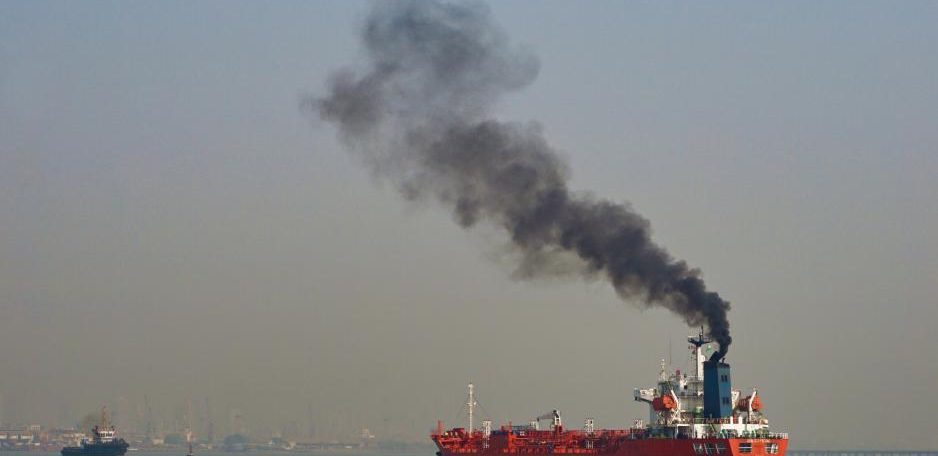Herein, we delved into Heavy fuel oil, the meaning, the characteristics, the uses and shipping of HFO and also the environmental impacts of its spillage.
What is Heavy Fuel Oil?
Heavy fuel oil (HFO) is a category of fuel oils of a tar-like consistency.
It is also known as bunker fuel, or residual fuel oil, HFO is the result or remnant from the distillation and cracking process of petroleum. For this reason, HFO is contaminated with several different compounds including aromatics, sulfur, and nitrogen, making emissions upon combustion more polluting compared to other fuel oils.
Heavy fuel oil is predominantly used as a fuel source for marine vessel propulsion using marine diesel engines due to its relatively low cost compared to cleaner fuel sources such as distillates. The use and carriage of HFO on-board vessels presents several environmental concerns, namely the risk of oil spill and the emission of toxic compounds and particulates including black carbon. The use of HFOs is banned as a fuel source for ships travelling in the Antarctic as part of the International Maritime Organization’s (IMO) International Code for Ships Operating in Polar Waters (Polar Code). For similar reasons, an HFO ban in Arctic waters is currently being considered.
READ: Oil And Gas Vendor Registration Requirements
Characteristics of Heavy Fuel Oil
Heavy fuel oil consists of the remnants or residual of petroleum sources once the hydrocarbons of higher quality are extracted via processes such as thermal and catalytic cracking. Thus, HFO is also commonly referred to as residual fuel oil.
The chemical composition of HFO is highly variable due to the fact that HFO is often mixed or blended with cleaner fuels; blending streams can include carbon numbers from C20 to greater than C50. HFOs are blended to achieve certain viscosity and flow characteristics for a given use.
As a result of the wide compositional spectrum, HFO is defined by processing, physical and final use characteristics. Being the final remnant of the cracking process, HFO also contains mixtures of the following compounds to various degrees: “paraffins, cycloparaffins, aromatics, olefins, and asphaltenes as well as molecules containing sulfur, oxygen, nitrogen and/or organometals”. HFO is characterized by a maximum density of 1010 kg/m3 at 15°C, and a maximum viscosity of 700 mm2/s (cSt) at 50°C according to ISO 8217.
Uses and shipping of Heavy fuel oil
HFO has been used primarily by the shipping industry due to its low cost compared with all other fuel oils, being up to 30% less expensive, as well as the historically lax regulatory requirements for emissions of nitrogen oxides (NOx) and sulfur dioxide (SO2) by the IMO. For these two reasons, HFO is the single most widely used engine fuel oil on-board ships. Data available until 2007 for global consumption of HFO at the international marine sector reports total fuel oil usages of 200 million tons, with HFO consumption accounting for 174 million tons. Data available until 2011 for fuel oil sales to the international marine shipping sector reports 207.5 million tons total fuel oil sales with HFO accounting for 177.9 million tons.
Marine vessels can use a variety of different fuels for the purpose of propulsion, which are divided into two broad categories: residual oils or distillates. In contrast to HFOs, distillates are the petroleum products created through refining crude oil and include diesel, kerosene, naphtha and gas. Residual oils are often combined to various degrees with distillates to achieve desired properties for operational and/or environmental performance.
Environmental impacts of heavy fuel oil spills
Due to its very high viscosity and elevated density, HFO released into the environment is a greater threat to flora and fauna compared to distillate or other residual fuels. In 2009, the Arctic Council identified the spill of oil in the Arctic as the greatest threat to the local marine environment. Being the remnant of the distillation and cracking processes, HFO is characterized by an elevated overall toxicity compared to all other fuels. Its viscosity prevents breakdown into the environment, a property exacerbated by the cold temperatures in the Arctic resulting in the formation of tar-lumps, and an increase in volume through emulsification. Its density, tendency to persist and emulsify can result in HFO polluting both the water column and seabed.
Environmental impacts of heavy fuel oil use
The combustion of HFO in ship engines results in the highest amount of black carbon emissions compared to all other fuels. The choice of marine fuel is the most important determinant of ship engine emission factors for black carbon. The second most important factor in the emission of black carbon is the ship load size, with emission factors of black carbon increasing up to six times given low engine loads. Black carbon is the product of incomplete combustion and a component of soot and fine particulate matter (<2.5 μg). It has a short atmospheric lifetime of a few days to a week and is typically removed upon precipitation events. Although there has been debate concerning the radiative forcing of black carbon, combinations of ground and satellite observations suggest a global solar absorption of 0.9W·m−2, making it the second most important climate forcer after CO2. Black carbon affects the climate system by: decreasing the snow/ice albedo through dark soot deposits and increasing snowmelt timing, reducing the planetary albedo through absorption of solar radiation reflected by the cloud systems, earth surface and atmosphere, as well as directly decreasing cloud albedo with black carbon contamination of water and ice found therein. The greatest increase in Arctic surface temperature per unit of black carbon emissions results from the decrease in snow/ice albedo which makes Arctic specific black carbon release more detrimental than emissions elsewhere.

